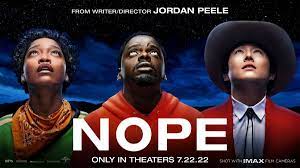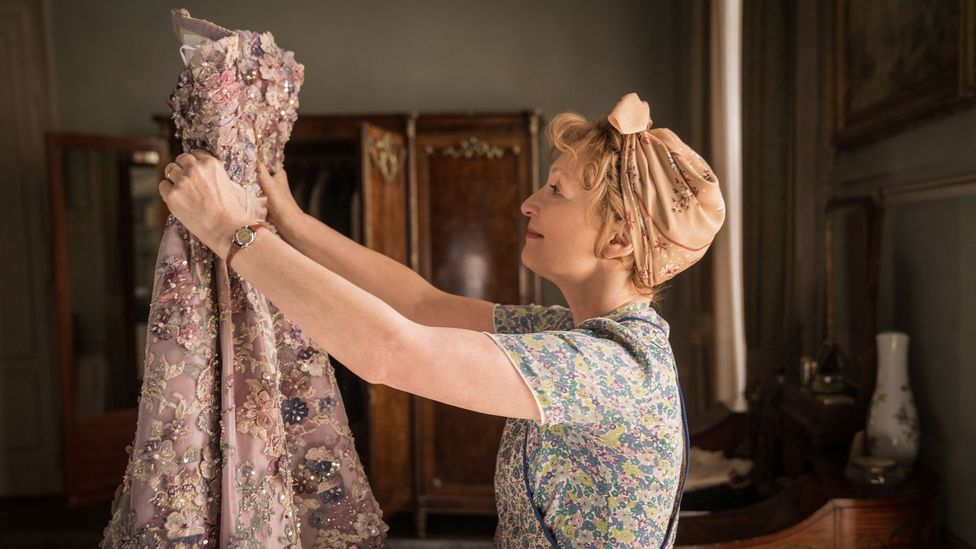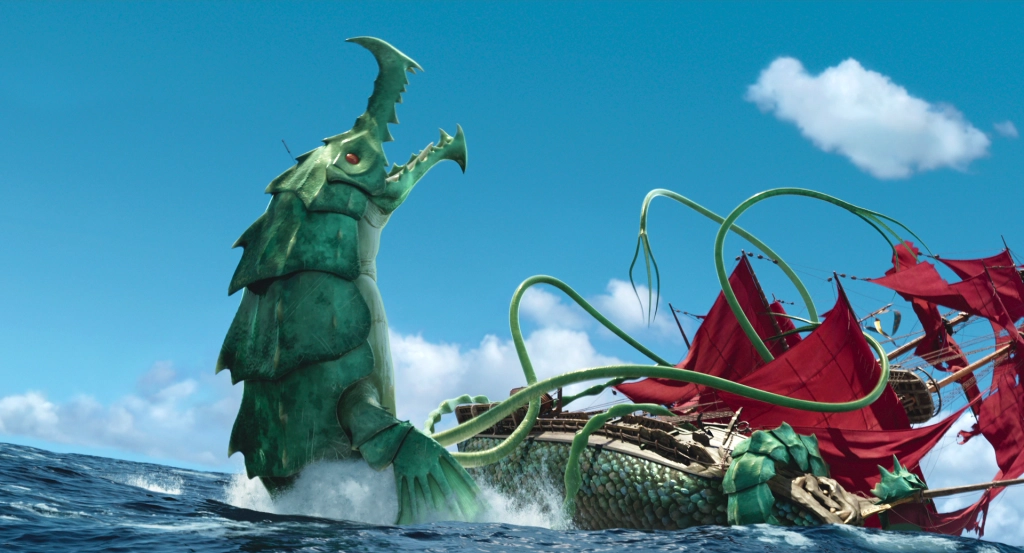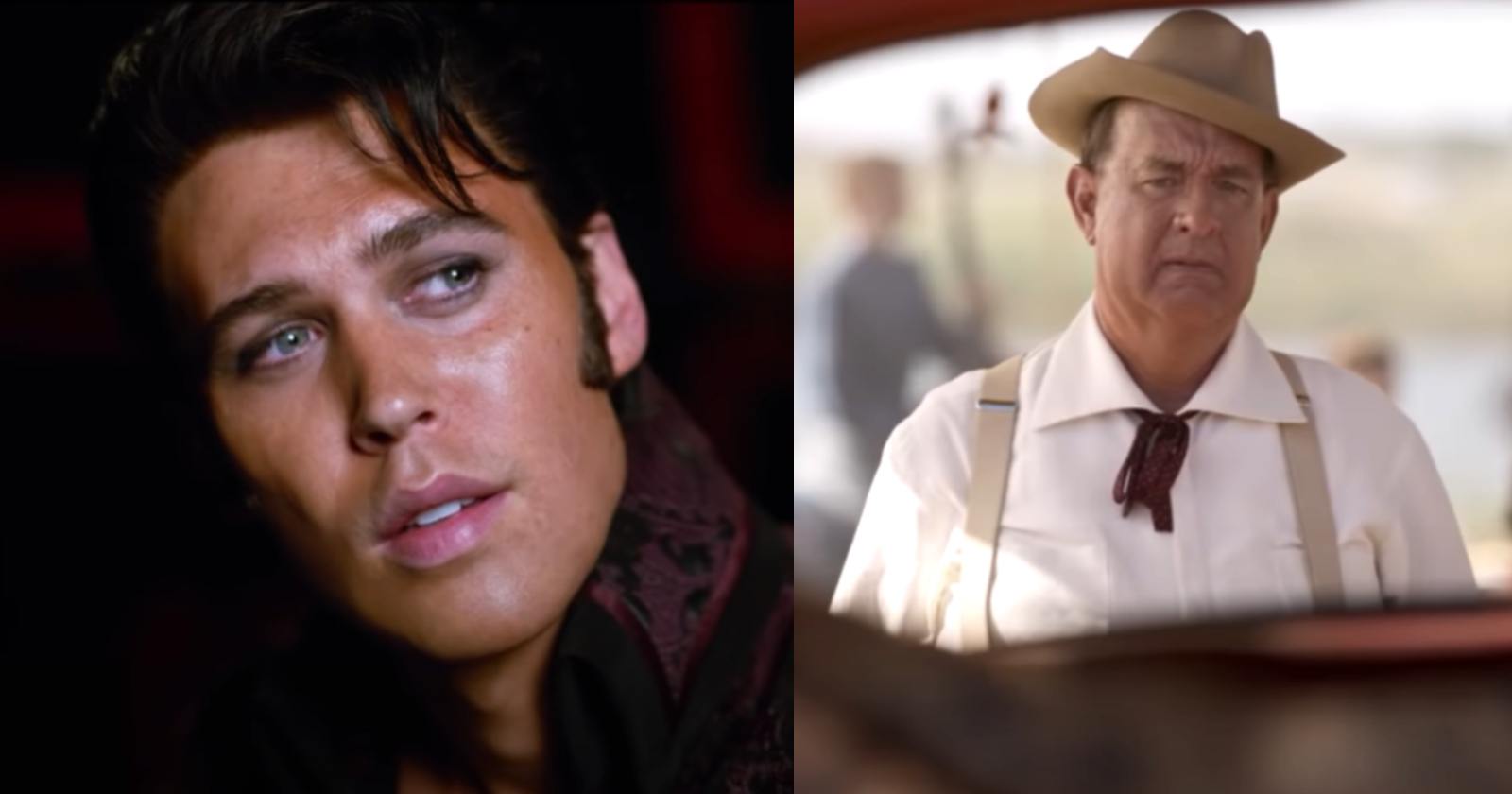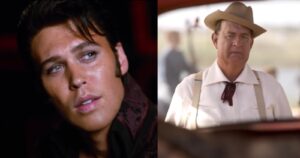NOPE
Posted on July 20, 2022 at 3:58 pm
B +| Lowest Recommended Age: | Mature High Schooler |
| MPAA Rating: | Rated R for language throughout and some violence/bloody images |
| Profanity: | Very strong language |
| Alcohol/ Drugs: | Alcohol, vaping |
| Violence/ Scariness: | Extended science fiction peril and violence, characters injured and killed, very graphic and bloody images, jump scares |
| Diversity Issues: | Diverse characters |
| Date Released to Theaters: | July 22, 2022 |
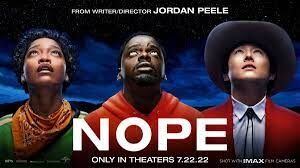
OJ Haywood (Daniel Kaluuya of “Get Out” and “Judas & The Black Messiah”) is a horse trainer, like his father, grand-father, and several greats. According to his sister Emerald (Keke Palmer of “Hustlers,” “Lightyear,” and “Akeelah and the Bee”), their family goes back to the very first moments of moving pictures in 1878, the two-second series of cards showing a man riding a horse. The family business is training horses for movies and television.
After a brief, terrifying preface on the set of a 90s sitcom, we see OJ and his father Otis (Keith David) working on the ranch, talking about the importance of making sure an upcoming job goes well and annoyed that Emerald has not shown up. Then something strange happens. There are disturbing sounds, like the zings and thwacks of arrows. The sound design by Johnnie Burn is creepy, evocative, and never less than outstanding. A key on a ring pierces a horse’s rump. Shrapnel hits and kills Otis.
The ranch is isolated, but nearby is a small cowboy theme park owned by former child star Ricky “Jupe” Park (Steven Yuen of “Minari”) and his wife, Amber (Wrenn Schmidt of “For All Mankind”). Pressed for money, OJ has been selling horses to Jupe, hoping to be able to buy them back some day. But Jupe wants to buy the entire ranch.
Meanwhile, both are beginning to be aware that the strange electrical disturbances and glimpses of something in the sky may be from another world. More important, Ricky, OJ, and Emerald see this as a potential for profit. Jupe wants to make the extraterrestrials an attraction at the park. If OJ and Emerald can get good, clear photos of aliens, they can get on Oprah!
Yeah, they’re going to need a lot more than a bag of Reese’s Pieces if they’re looking to find a cute little ET for Oprah.
That scary preface I mentioned comes back. Something went horribly wrong at a live taping of a silly sitcom starring a little Asian kid and a chimp. That child grew up to be Jupe. While he speaks smoothly about the “SNL” sketch based on the incident (Chris Kattan as the chimp!) and is happy to point out artifacts from his past, a theme about the relationship between animals and the humans who think they can tame them appears as unsettlingly as the odd sounds we hear. We see it again as the horse named Lucky misbehaves at that crucial job OJ’s father was concerned about. Or rather, the humans misbehave, giving an inadequate safety briefing. OJ mumbles until Emerald arrives and her presentation is more about her than it is about the horse. It is not a coincidence that both of these problems occur in the highly artificial performative environment of a show, the most heightened version of human life with the strange sounds and hot, bright lights and a deep gulf between reality and fantasy. There’s nice brief moment when someone reacts to OJ’s name as though he’s connected to OJ Simpson (it stands for Otis Jr.).
This ties in with the idea that the first reaction OJ, Emerald, and Jupe have to the idea of aliens is to make a show of them. How we present ourselves and how we are perceived is core to this story, going back to Emerald’s diversion in what is supposed to be a safety briefing to a description of her ancestor, the jockey in the prototype for moving images, where the horse’s name was identified but not the name of the human riding him. At June’s little theme park, Emerald inadvertently photobombs a group of visitors. And later, two more characters are added to the effort to document the aliens, Angel Torres (Brandon Perea) a blond-tipped sales and installation specialist from a big box store who sells surveillance cameras to the Haywoods and wants to find out what they want to surveil, and the fabulously named Antlers Holst, fabulously played by Michael Wincott, a cinematographer artiste who like to “make one for them, one for me” and considers capturing images without electricity a creative challenge.
There are a lot of ideas here, including some sly digs at Peele’s own industry that could fit in a Key and Peele sketch plus a dazzling series of visual images. The air dancers the Haywoods bring to the ranch, the wonderfully imagined, just tacky enough details of the theme park, the connection between Jupe’s cowboy hat blown away by the ship and the ship itself are all brilliantly designed. Every performance is superb. Schmidt and Yeun make us wish for an entire other story about their relationship. Kaluuya continues to be one of the most fascinating actors working today, bringing a rare sense of thoughtful gravity and stillness to the screen. Keke Palmer, always great, gives her best performance yet as we see Emerald become more grounded, more fierce, more aware of her connection to the brother who stayed when she left.
There are too many ideas, too many things to see to come together with the impact “Get Out” and “Us” had. But it is wonderfully entertaining and provocative enough to spark what I’m sure will be some fascinating online speculation, and to add to Peele’s reputation as one of the most significant filmmakers of his generation.
Parents should know that this film includes tense and scary sci-fi peril and violence with some graphic images. Characters are injured and killed. At one point in my notes I just wrote: “BLOOD!” There are jump scares and fake-outs. Characters use very strong language.
Family discussion: How does the relationship between OJ and Emerald change? Why are the sections of the movie named after the horses?
If you like this, try: “Get Out,” “Us,” “Coherence,” and the various versions — except the most recent — of “Invasion of the Body Snatchers”

